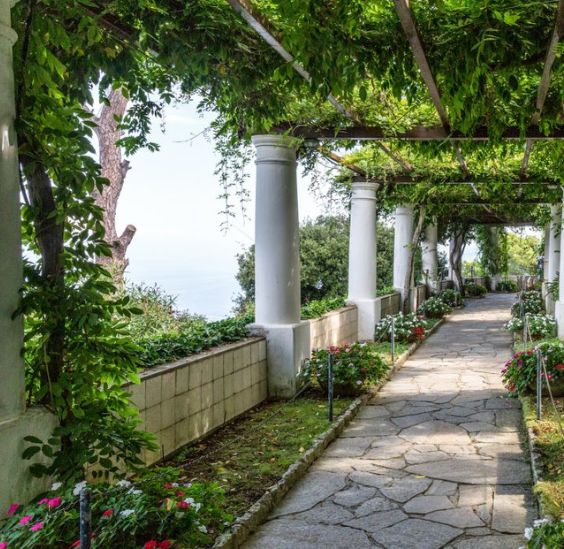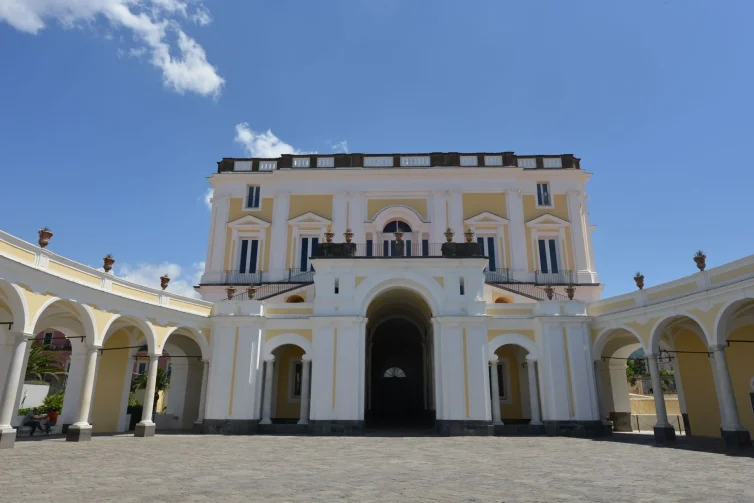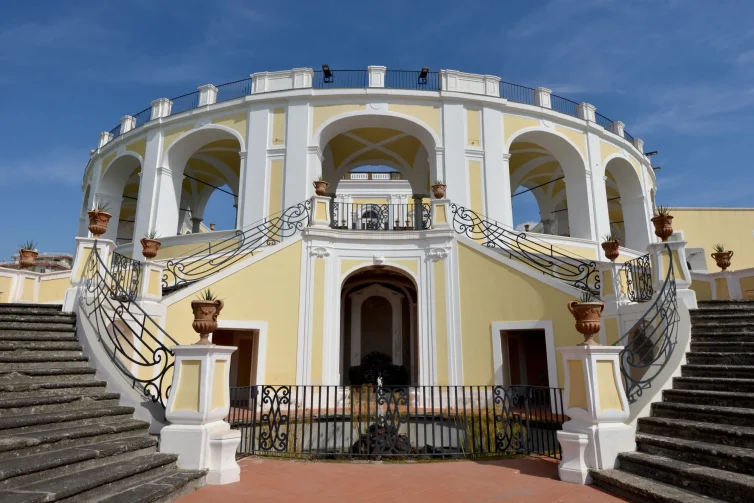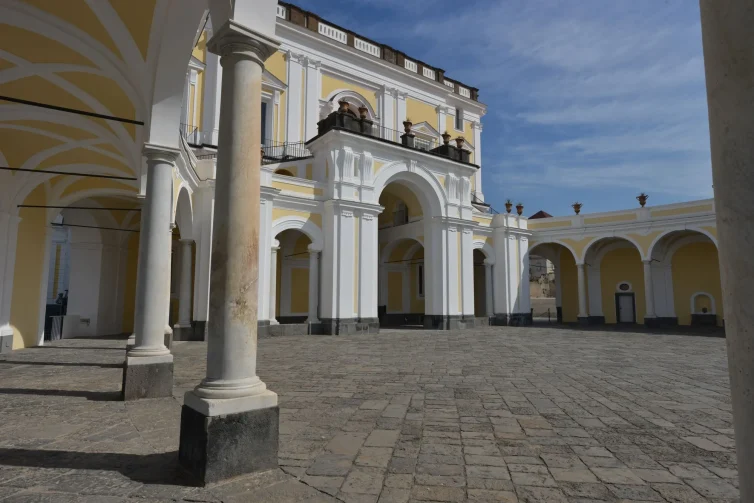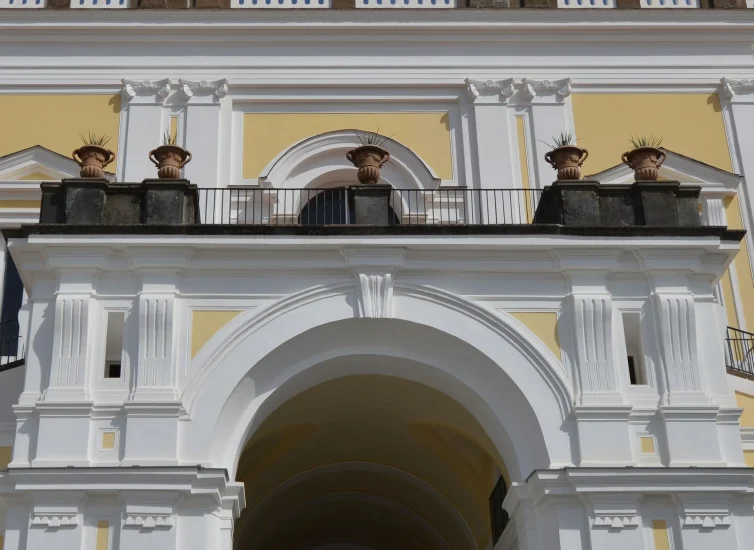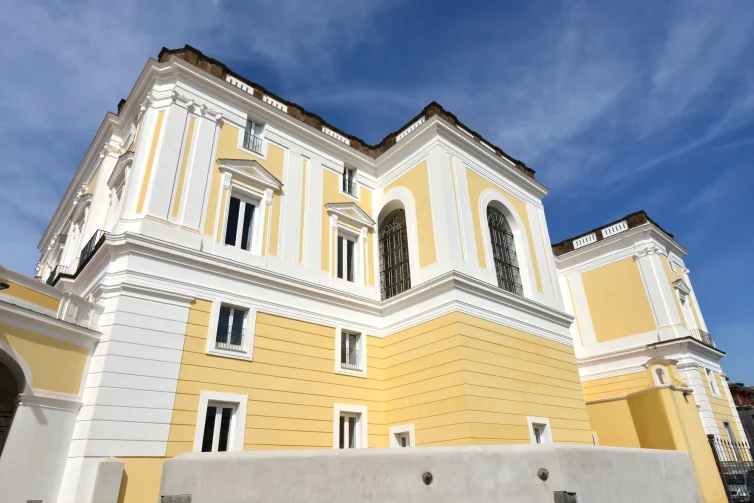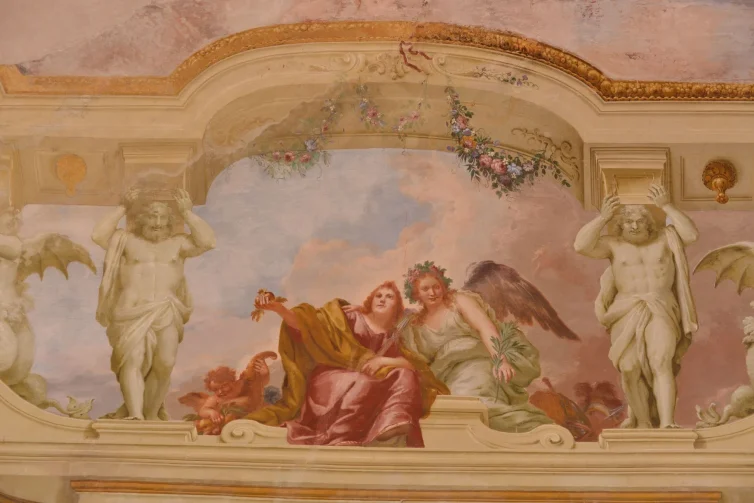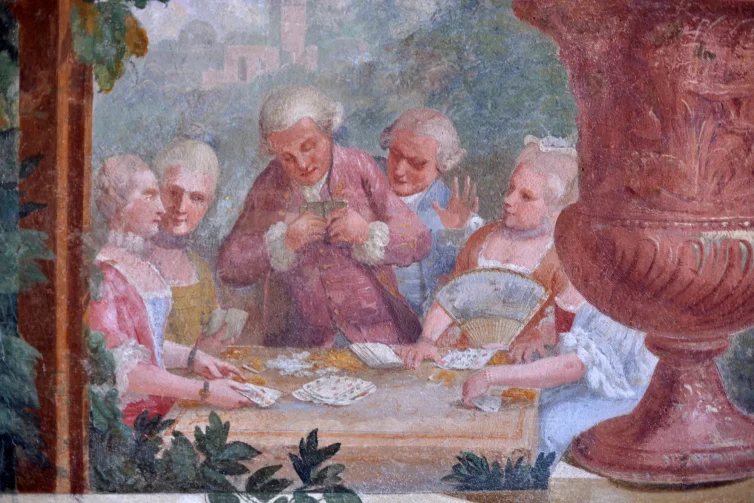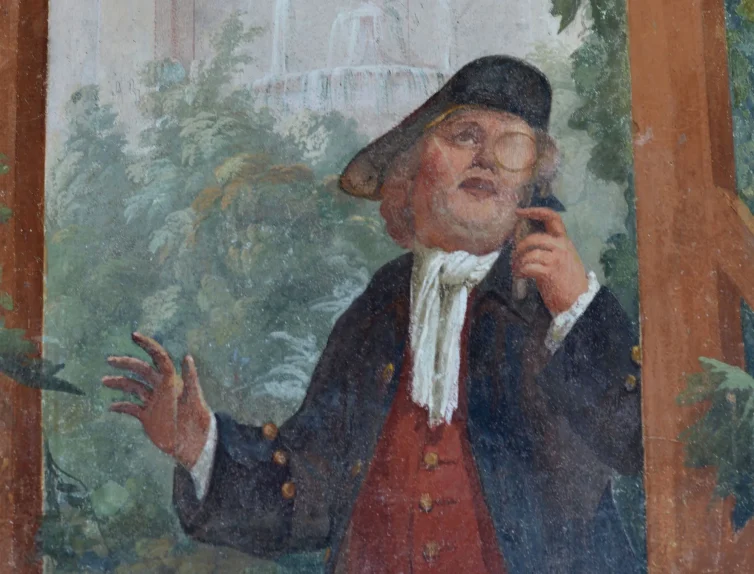Villa Campolieto
Nestled along the vibrant coast of Naples, Villa Campolieto emerges as a beacon of historical elegance and architectural brilliance.
This majestic villa, part of the illustrious Golden Mile, stands as a testament to the grandeur of 18th-century Italian architecture and the genius of its creator, Luigi Vanvitelli. As we journey through the villa’s storied past, its architectural marvels, and its esteemed neighborhood, Villa Campolieto invites us to explore a world where history, beauty, and culture intertwine seamlessly.
Table of Contents

The History of Villa Campolieto
Villa Campolieto, ensconced in the heart of the Golden Mile, embodies a historical marvel that dates back to the enchanting era of the 18th century. This illustrious estate was envisaged as a symbol of opulence and grace, a summer haven for the aristocracy, under the auspices of the Ruffo di Bagnara family. Its construction commenced in the 1750s, under the discerning eye of Luigi Vanvitelli, one of the era’s most renowned architects, before being completed by his son, Carlo Vanvitelli.
The villa’s inception lies in the golden age of the Kingdom of Naples, a period marked by unprecedented cultural and architectural flourishing. It was a time when Naples asserted itself as a beacon of the arts, science, and enlightenment, with the villa serving as a testament to the city’s burgeoning prestige. The estate was not merely a residence but a cultural salon, hosting luminaries of the day, from poets to politicians, all drawn by its beauty and the patronage of the arts by its noble residents.
Over the centuries, Villa Campolieto has witnessed the ebb and flow of history, surviving the tumult of revolutions, changes in government, and the vicissitudes of fortune that saw it transition from private ownership to a public asset. In the 19th century, the villa saw a period of decline, reflecting the broader political and economic challenges facing Italy. However, the 20th century heralded a new chapter for Villa Campolieto, with efforts to restore and preserve its architectural and historical integrity, ensuring its legacy endures.
The restoration initiatives undertaken in the latter part of the 20th century and into the 21st century have been pivotal in reinvigorating Villa Campolieto. These efforts have seen the villa not only restored to its former glory but also transformed into a vibrant cultural center. Today, it stands as a monument to the rich cultural heritage of Naples, hosting a variety of events, from concerts to conferences, and continuing its tradition of cultural patronage.
The history of Villa Campolieto is emblematic of the broader narrative of Naples and its environs – a story of resilience, cultural richness, and an enduring legacy. It remains a beacon of the Neapolitan spirit, inviting visitors to step back in time and experience the splendor of an era when Naples was a pivotal cultural and political hub in Europe. Through its storied halls, one can traverse centuries of history, art, and architecture, making Villa Campolieto not just a landmark of the Golden Mile but a treasure of Italian heritage.
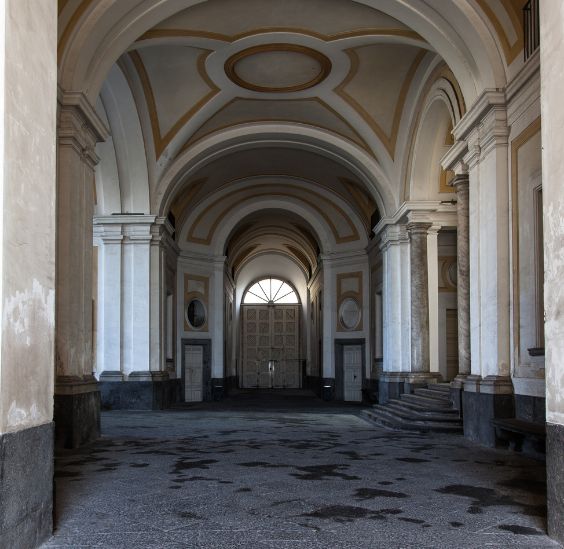
featured tour
Villa Campolieto, Portici Royal Palace and The Golden Mile Tour
The journey begins at the Royal Apartments of the Palace of Portici, the cherished summer abode of the Bourbon monarchy. Within the same premises, visitors will find the Herculanense Museum, a captivating interactive museum that serves as a modern homage to the inaugural archaeological museum showcasing relics from the ancient cities of Herculaneum and Pompeii, tragically entombed by the catastrophic eruption of Mount Vesuvius in 79 AD. Following this immersive historical experience, the tour gracefully proceeds to Villa Campolieto, a distinguished example among the myriad of opulent palaces erected by the nobility of the royal court.
Who is Luigi Vanvitelli?
Luigi Vanvitelli, born Ludovico Vinnutelli on May 12, 1700, in Naples, Italy, stands as a colossus in the pantheon of European architects. His career, spanning several decades, left an indelible mark on the architectural landscape of 18th-century Italy, embodying the transition from the ornate Baroque to the more restrained Neoclassical style. Son of the Dutch painter Gaspar van Wittel, Luigi inherited a keen eye for detail and a profound sense of artistic aesthetics, which would later define his architectural projects.
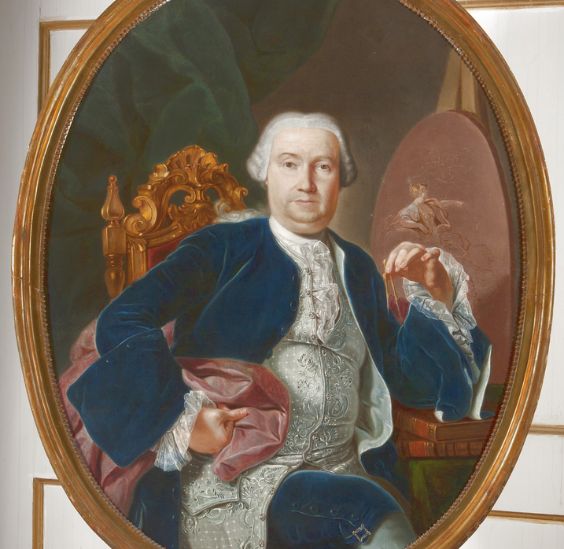
Educated in Rome, Vanvitelli’s early career was nurtured under the tutelage of prominent architects of the time, such as Filippo Juvarra. This period was instrumental in shaping his design philosophy, merging the grandiosity of the Baroque with the emerging ideals of Neoclassicism. His talent did not go unnoticed, and by the mid-18th century, Vanvitelli was commissioned by the Bourbon kings of Naples, a testament to his rising stature and the trust vested in his architectural vision.
The pinnacle of Vanvitelli’s career was the design and construction of the Royal Palace of Caserta, a project that epitomized the grandeur of the Bourbon monarchy. Conceived as a rival to Versailles, the palace is a masterpiece of symmetry, scale, and splendor, showcasing Vanvitelli’s innovative approach to space, light, and architectural ornamentation. The palace, with its vast gardens, intricate waterworks, and expansive interiors, remains one of the most significant achievements of 18th-century European architecture.
Vanvitelli’s influence extended beyond individual projects to shaping the urban fabric of Naples and its surroundings. His designs for aqueducts, bridges, and public buildings contributed to the modernization of the city’s infrastructure, integrating aesthetic beauty with functional urban planning. His work on the restoration of the ancient Roman aqueduct, the Aqua Caroli, exemplifies his ability to blend historical reverence with contemporary needs.
Throughout his career, Vanvitelli was not just an architect but a cultural icon who bridged the gap between the Baroque’s emotional intensity and the Neoclassical’s intellectual rigor. His legacy is not merely in the structures he created but in his contribution to the evolution of architectural thought. He left behind a body of work that continues to inspire and a legacy that cements his place as a pivotal figure in the history of architecture.
His death on March 1, 1773, marked the end of an era, but his vision and creations, such as Villa Campolieto, continue to speak of a time when architecture was a dialogue between the past and the future, between the grandiose and the graceful. Luigi Vanvitelli’s life and work remain a testament to the enduring power of architectural innovation to shape the world.
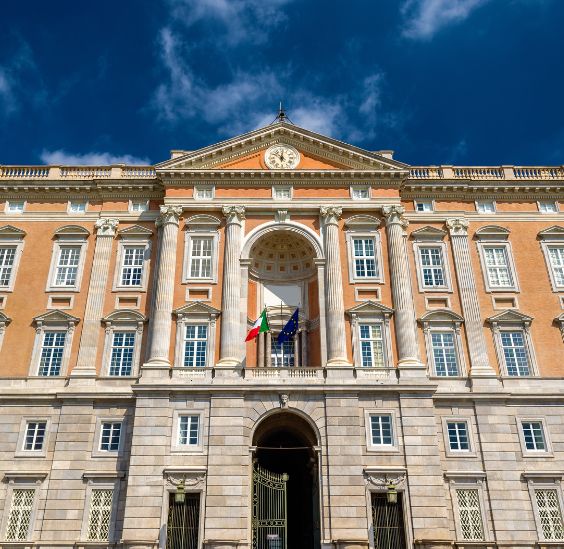
Architectural Style of Villa Campolieto
Villa Campolieto, nestled on the illustrious Miglio d’Oro, stands as a testament to the architectural ingenuity of the 18th century, particularly under the influence of Luigi Vanvitelli. This villa encapsulates the transitional period in architectural history, where the grandeur of the Baroque began to give way to the balanced and harmonious principles of Neoclassicism. Vanvitelli’s design for Villa Campolieto is a masterclass in this stylistic evolution, showcasing his ability to meld the emotional intensity of Baroque with the intellectual austerity of Neoclassicism.
The villa’s exterior is a celebration of symmetry and proportion, hallmarks of the Neoclassical style. The facade, characterized by its rhythmic sequence of arches and pilasters, creates a dialogue between light and shadow, a feature that harkens back to the Baroque yet anticipates the Neoclassical. The grand entrance, an inviting axis that draws visitors into the heart of the villa, is framed by classical columns, supporting a pediment that crowns the edifice with dignity and grace.
Upon entering Villa Campolieto, one is greeted by an interior that seamlessly integrates architectural space with decorative art. The use of frescoes, intricate plasterwork, and stucco decorations in the interior rooms illustrates Vanvitelli’s skill in creating a cohesive aesthetic experience that is both visually stunning and architecturally sound. The villa’s layout, with its enfilade of rooms, facilitates a natural flow that guides the visitor through a curated journey of artistic and architectural beauty.
One of the villa’s most remarkable features is its relationship with the surrounding landscape. Vanvitelli’s design incorporates the natural beauty of the Gulf of Naples, with gardens that extend from the villa in a series of terraces and parterres, blending architecture with nature. This integration highlights the Enlightenment-era fascination with the natural world as a source of inspiration and a backdrop for human achievement.
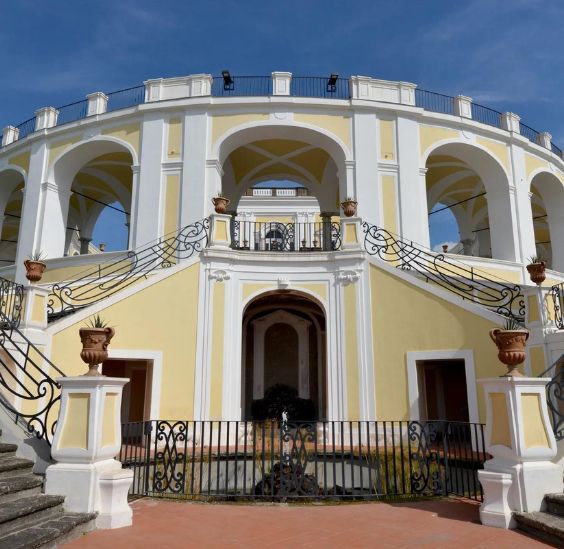
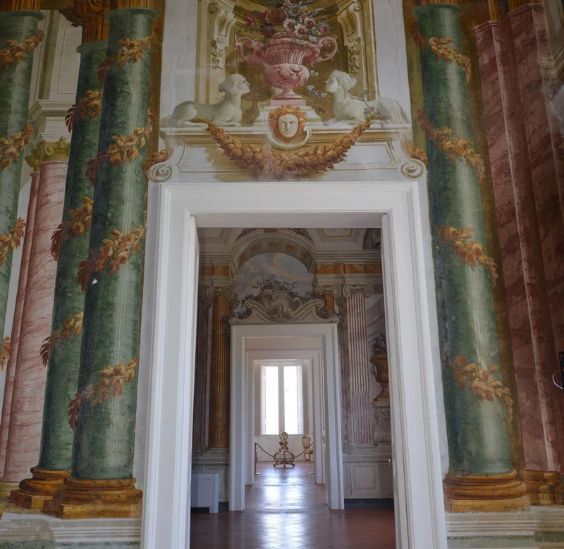
The architectural style of Villa Campolieto also reflects the broader cultural currents of its time, where architecture was seen as a medium to express the enlightened ideals of harmony, balance, and beauty. Vanvitelli’s work on the villa is emblematic of these principles, offering a space that is both a retreat from and a reflection of the world outside its walls.
Furthermore, the villa’s architectural significance lies not just in its aesthetic qualities but in its embodiment of an era’s aspirations and values. It served as a model for subsequent developments in Neoclassical architecture, influencing the design of villas and palaces across Europe. The enduring beauty of Villa Campolieto, therefore, lies in its ability to capture the essence of a pivotal moment in architectural history, making it a crucial study for understanding the evolution of European architecture.
In essence, Villa Campolieto is more than just a building; it is a narrative in stone and mortar, telling the story of a time when architecture sought to harmonize with nature and human values. Its style, characterized by elegance, symmetry, and integration with the landscape, continues to enchant visitors, offering a window into the genius of Luigi Vanvitelli and the architectural heritage of the Neapolitan region.
The Golden Mile: Naples’ Architectural Crown Jewel
The Golden Mile, or Miglio d’Oro, is a stretch of coastline in the Bay of Naples that stands as a testament to the opulence and cultural richness of the 18th-century Neapolitan aristocracy.
This historic avenue, flanked by the lush slopes of Mount Vesuvius on one side and the sparkling waters of the Gulf of Naples on the other, is dotted with a series of spectacular villas and palaces, including the magnificent Villa Campolieto. The inception of the Golden Mile is deeply entwined with the history of the Kingdom of Naples, reflecting the aspirations of a society that sought to combine natural beauty with architectural grandeur.
Historical Context
The Golden Mile’s development was fueled by the Bourbon monarchy’s desire to establish a corridor of leisure and luxury that would serve as a showcase for the wealth, power, and refined taste of Naples’ elite. In the 18th century, as Naples flourished under the relatively stable and enlightened rule of the Bourbons, the city’s nobility embarked on an ambitious project to construct grandiose villas along this picturesque stretch of coast. These villas were not merely residences; they were symbols of prestige, centers of intellectual and cultural activity, and retreats from the urban bustle of Naples.

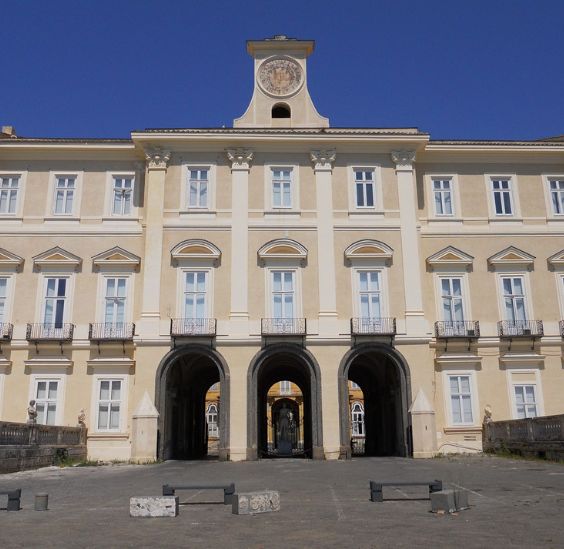
Architectural and Cultural Significance
Each villa along the Golden Mile is unique, displaying a variety of architectural styles that range from the Baroque to the Neoclassical, reflecting the evolving tastes and artistic influences of the time. Architects like Luigi Vanvitelli and his contemporaries were commissioned to design these estates, resulting in a collection of properties that were as much artistic statements as they were homes. These villas were adorned with lush gardens, ornate decorations, and elaborate frescoes, creating an environment that celebrated the arts, nature, and the intellectual pursuits of their occupants.
The Golden Mile was more than an architectural marvel; it was a cultural artery that pulsed with the lifeblood of Neapolitan society. The villas hosted salons, gatherings of intellectuals, artists, and writers who debated the pressing issues of the day, shared creative ideas, and fostered the Enlightenment spirit. This concentration of cultural activity contributed to the intellectual ferment of Naples, making it a vibrant center of arts, science, and philosophy in Europe.
Preservation and Modern Relevance
Today, the Golden Mile remains a cherished part of Naples’ heritage, attracting tourists and scholars alike. Efforts to preserve the villas and their gardens have been paramount in maintaining the area’s historical integrity and beauty. These estates now serve various purposes, from museums and cultural centers to venues for events, continuing their tradition of being spaces for cultural exchange and enrichment.
The significance of the Golden Mile extends beyond its architectural and historical value; it is a symbol of the enduring allure of Naples as a place where beauty, culture, and history intertwine. As visitors wander through these villas, they are transported to a time when Naples was a beacon of enlightenment, a reminder of the city’s role in shaping the cultural and architectural landscape of Europe.
The Golden Mile, with Villa Campolieto as one of its jewels, encapsulates the spirit of an era that valued beauty, intellect, and harmony with nature. It stands as a monument to human creativity and the timeless desire to blend the natural and the man-made into something truly sublime.
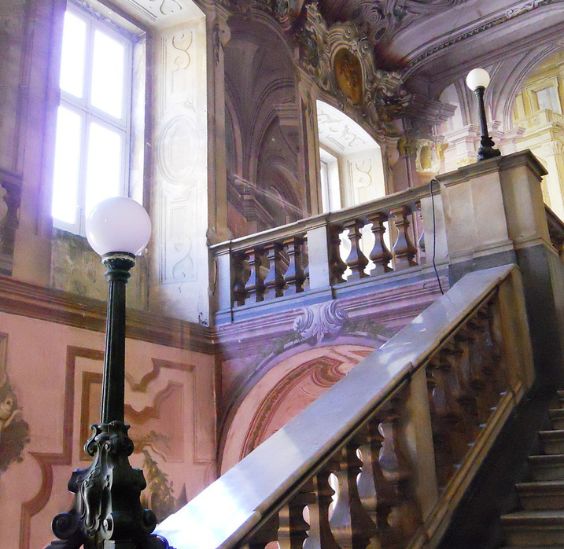
Other Famous Villas in the Golden Mile
The Golden Mile is not just known for Villa Campolieto but is also home to a constellation of other architectural marvels that together form a tapestry of Naples’ rich cultural and historical heritage.
Each villa, with its unique design and storied past, contributes to the tapestry of this illustrious stretch, reflecting the grandeur of the Neapolitan aristocracy and the artistic vision of the era. Here, we delve into the significance and beauty of some of these celebrated estates.
Villa Favorita
Villa Favorita, often cited for its exemplary integration of architecture with nature, stands as a striking example of the Rococo style, with later additions embracing the Neoclassical. Initially constructed in the early 18th century, the villa became a favored retreat for royalty and the elite, celebrated for its luxurious interiors and expansive gardens that stretch towards the sea. The estate’s design encourages a seamless flow between indoor and outdoor spaces, embodying the Enlightenment-era ideal of harmony with nature. Today, Villa Favorita continues to enchant visitors, offering a glimpse into the opulent lifestyle of its former inhabitants.
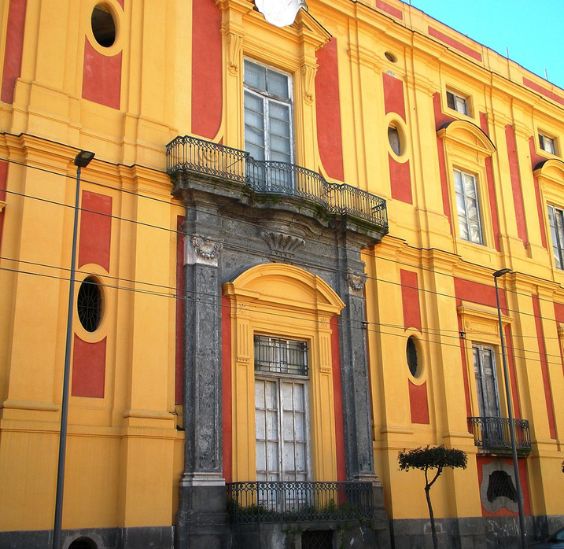

Villa Pignatelli
With its distinctive Pompeian red façade, Villa Pignatelli represents a unique blend of architectural styles, from Neoclassical to eclectic. Built in the 19th century, this villa is surrounded by one of Naples’ most exquisite gardens, a verdant oasis that contrasts with the urban landscape. The interior, now a museum, houses an impressive collection of art, furniture, and historical artifacts, providing insight into the life of the Neapolitan nobility. The villa’s preservation as a cultural institution ensures that its history, beauty, and educational value remain accessible to the public.
Villa San Michele
Though not located within the traditional bounds of the Golden Mile, Villa San Michele on the island of Capri deserves mention for its architectural and historical significance, echoing the themes of beauty and culture that define the Golden Mile’s estates. Built by the Swedish physician and author Axel Munthe in the late 19th and early 20th centuries, the villa is a sanctuary of art and nature. Its gardens offer breathtaking views of the Mediterranean, and its collection of artifacts reflects Munthe’s passion for classical antiquity. Villa San Michele stands as a testament to the enduring allure of the Neapolitan landscape and its capacity to inspire.
Legacy and Preservation
The villas of the Golden Mile, including Villa Favorita, Villa Pignatelli, and the broader cultural landscape they occupy, are more than mere historical relics. They are living monuments to a period of unparalleled cultural vibrancy and architectural innovation. Efforts to preserve these estates are crucial, not only for their historical and architectural value but also for their role in sustaining the cultural and educational heritage of Naples. They serve as venues for cultural events, educational programs, and as spaces where the public can engage with history, art, and architecture in a direct and meaningful way.
The Golden Mile, with its array of historic villas, remains a cornerstone of Naples’ cultural identity, inviting exploration and admiration. It stands as a vivid reminder of the city’s past glories and its ongoing legacy as a center of beauty, culture, and intellectual achievement.
